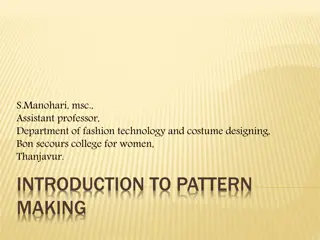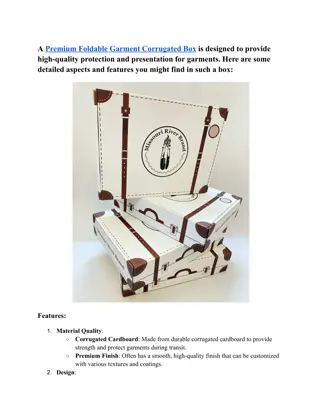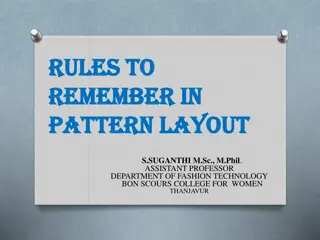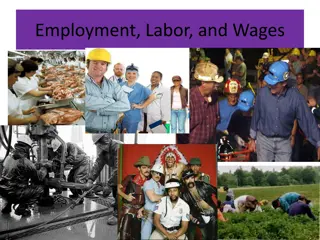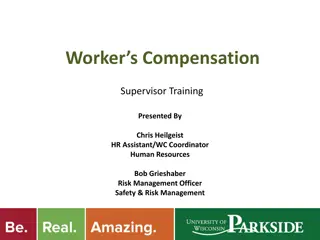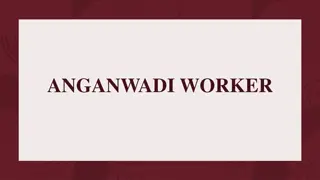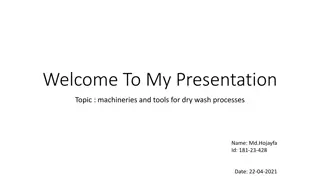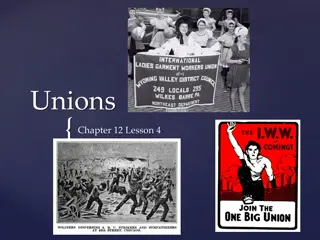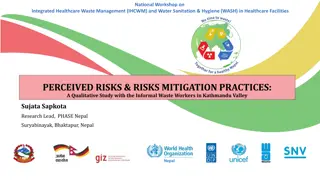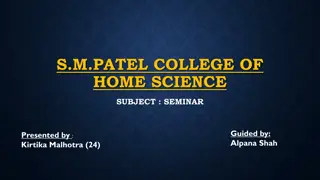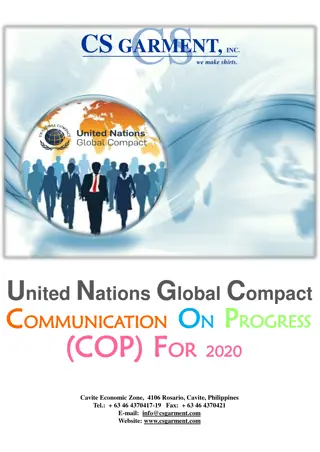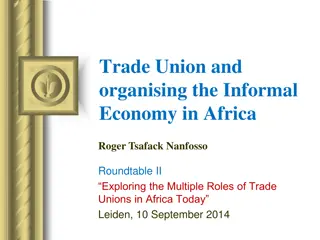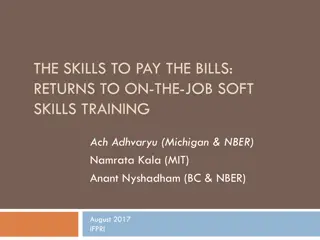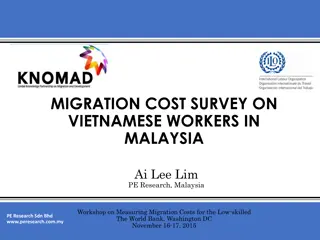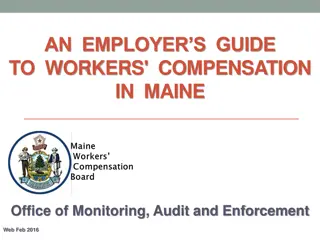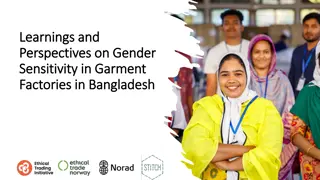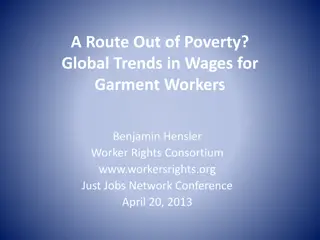Why Heat Transfer Labels are Highly Sought after by Business Owners,WinnersLebel
A heat transfer is an approach of taking a printed image & then going ahead to fix the image directly to the garment. It is done to copy the image on the garment itself. This proven technology is used extensively for customizing t-shirts and in recent times it is used widely for the application of t
0 views • 3 slides
Utilizing.Contractors and Other Gig Workers
Gig workers, also known as independent contractors, play a significant role in today's workforce by offering flexibility and specialized skills. This guide covers the definition of gig workers, types of gig workers, when to use them, proper classification, and the implications of misclassification.
1 views • 18 slides
Workers’.Compensation Training
Explore the comprehensive Workers Compensation Training Program, covering essential topics like insurance coverage, work-related injuries, legal aspects, benefits for employees and employers, and more. Gain insights into the purpose and benefits of workers compensation laws to ensure a safe workplac
0 views • 28 slides
Workers Advisers Office: Addressing Sexual Harassment Complaints
The Workers Advisers Office, a branch of the Ministry of Labour, provides free advice and assistance to workers on compensation claims and prohibited action complaints, including those related to sexual harassment. They handle compensation claims for injuries and diseases, as well as mental disorder
1 views • 45 slides
Introduction to Types of Stitches in Garment Manufacturing
Stitching plays a crucial role in garment manufacturing, and there are six main types of stitches: Chain Stitch, Hand Stitch, Lock Stitch, Multi-Thread Stitch, Over-Edge Stitch, and Covering Chain Stitch. Each type has its unique characteristics and uses, determining the quality and durability of th
5 views • 16 slides
Introduction to Pattern Making in the Fashion Industry
Pattern making is a crucial aspect of garment manufacturing, serving as a template for garment components. It requires technical skills, design interpretation, and construction understanding. The process involves drafting patterns based on measurements before cutting and assembling fabric. Different
2 views • 11 slides
Premium Fold Able Garment Corrugated Box
A Premium Foldable Garment Corrugated Box is designed to provide high-quality protection and presentation for garments. Here are some detailed aspects and features you might find in such a box:
1 views • 3 slides
Fabric Cutting Methods and Techniques for Garment Manufacturing
Fabric cutting is a crucial process in garment manufacturing that involves cutting fabrics according to patterns for quality garments. The cutting department follows a specific workflow to ensure precise cutting and marker planning. Different methods such as manual cutting with hand shears or power
3 views • 25 slides
Garment Processing Techniques for Fading Effects
Learn about garment processing techniques such as PP Spray with Potassium Permanganate, P.P. Sponging, Tagging, and Destroy for creating unique fading effects on denim, twill, poplin, and corduroy garments. Follow safety precautions and specific procedures outlined for each technique.
0 views • 8 slides
Comprehensive Guide to Kansas Workers' Compensation Laws
This comprehensive guide covers various aspects of the Kansas Workers' Compensation laws, including the workers' compensation remedy, insurance requirements, applicability criteria, exceptions, compensable injuries, and medical benefits. It explains the exclusive, limited remedies available for diff
1 views • 13 slides
Essential Rules for Pattern Layout in Fashion Design
Proper pattern layout is crucial in garment construction. Press fabric, choose the right fold method, align grain lines, leave space for cutting, pin patterns securely, and use special layouts for specific designs. Following these guidelines ensures efficient cutting and accurate garment constructio
4 views • 11 slides
Understanding Stay Stitching and Easing in Sewing
Stay stitching is crucial for stabilizing fabric edges, especially bias-cut and curved pieces, while easing helps create fullness without compromising garment structure. These techniques are essential in garment construction to ensure proper fit and prevent distortion. Learn where and how to use sta
4 views • 9 slides
Evolution of Labor Movement in America: From Printers to Industrial Workers
Labor movement in America started in 1778 when printers in New York City demanded higher pay, leading to the formation of labor unions. Over the years, the workforce shifted from farmers to factory workers due to immigration and industrialization. The Civil War and westward expansion further fueled
2 views • 34 slides
Workers' Compensation and Safety Culture Training Overview
This training session delves into the importance of Workers' Compensation, the authority for health and safety in the workplace, components of a safety culture, benefits of fostering a safety culture, costs associated with Workers' Compensation, and the basics of Workers' Compensation including defi
0 views • 34 slides
Role of Anganwadi Workers in Combating Child Malnutrition in India
Anganwadi workers play a crucial role in addressing child malnutrition, infant mortality, and lack of education in India. They operate under the Integrated Child Development Services (ICDS) scheme, providing essential healthcare, nutrition, and educational support to children aged 0-6 years. With a
0 views • 10 slides
Analysis of Taylor's Differential Piece Rate System in Incentive Schemes
The Differential Piece Rate System introduced by Taylor in the field of scientific management aimed to reward efficient workers with higher piece rates for higher production while penalizing slow workers with lower rates. This system, based on time and motion studies, incentivized workers to complet
0 views • 14 slides
Remember the Dead, Fight for the Living: International Workers Memorial Day
International Workers Memorial Day on April 28 commemorates the workers who have lost their lives due to work-related accidents. In the UK, on average 135 workers die in such accidents each year, with an additional 13,000 suffering from occupational lung diseases and cancers. Safety campaigners esti
0 views • 10 slides
Exploring the Life of a Garment Worker Through Reshma's Story
Delve into the daily life of Reshma, a young garment worker in Dhaka, through a heartwarming narrative that portrays the challenges and triumphs of her family. Discover how Reshma's uncle, Raton, steps in to support the family after her father's tragic accident and learn about her younger brother Ba
0 views • 24 slides
Machineries and Tools for Dry Wash Processes in Garment Industry
Garment washing plays a vital role in enhancing the appearance and quality of textiles. This presentation by Md. Hojayfa delves into the machineries and tools utilized in the dry wash processes of the garment industry. It covers the machines used in washing plants, the objectives of washing, dry pro
1 views • 7 slides
Winners Labels Why Heat Transfer Labels Are Highly in Demand by Business Owners
Heat transfer is nothing but a methodology of taking a printed image and getting the image fixed directly on the garment. It is being done in order to get the image copied onto the garment itself. Heat transfer labels proven technology is extensively
0 views • 4 slides
Insights into Garment Printing Industry Trends
Explore the evolution of garment printing businesses like PoPATL and AnaJet, the impact of DTG technology, marketing strategies, and operational efficiencies. Learn about key players like Karl Tipre and PoPATL founders Brian Wynder and Charlie Bunkley.
0 views • 42 slides
Guide to South Carolina Workers' Compensation Insurance
This guide provides valuable insights from an employer's perspective on handling workers' compensation claims in South Carolina. It covers the role of the Workers' Compensation Commission, eligibility criteria for insurance, who can file a claim, and the elements of a compensable claim. The informat
0 views • 37 slides
The Rise of Unions and Labor Conditions in the Late 19th Century
Labor conditions in the late 1800s were harsh, with long work weeks, low wages, and no benefits for workers. Deflation caused a rise in the value of money, leading to resentment among workers who organized into unions to demand better wages and working conditions. Craft workers and common laborers f
0 views • 17 slides
Challenges and Policies in Formalising Women Workers in India
The Indian labor market faces significant challenges in formalizing women workers, with a noticeable decline in women's employment especially in rural areas. Despite recent policy attempts at formalization, such as the Unorganized Workers Social Security Act 2008 and the Maternity Benefits Act, wome
0 views • 19 slides
Perceived Risks and Risks Mitigation Practices in Informal Waste Workers: A Qualitative Study
A qualitative study conducted in Kathmandu Valley exploring the perceived risks and mitigation practices of informal waste workers. The research project, led by Sujata Sapkota, aims to address the occupational and health challenges faced by these workers. The study includes a mix of quantitative and
0 views • 22 slides
Seminar on Garment Recycling Awareness and Techniques
Textile recycling involves reusing or reprocessing used clothing and fibrous materials to reduce waste. The seminar aimed to study garment recycling awareness among housewives from various socio-economic backgrounds. The methodology included data collection through surveys and interviews, with a foc
0 views • 23 slides
Awareness and Techniques of Garment Recycling Among Housewives
This seminar conducted at S.M. Patel College of Home Science focused on studying the awareness of garment recycling and techniques adopted by housewives from different socio-economic backgrounds. The study aimed to promote the reuse and reprocessing of textiles to reduce waste. Through data collecti
0 views • 22 slides
Promoting Labor Rights of Migrant Workers in Chile
Chile has seen a significant influx of migrant workers in recent years, prompting the government to develop a comprehensive migration policy. The Ministry of Labor plays a key role in ensuring the protection and integration of migrant workers, emphasizing equal rights and opportunities for both migr
0 views • 12 slides
CS Garment, Inc.: Upholding Human Rights and Sustainable Business Practices
CS Garment, Inc. is a reputable company in the Philippines that has been manufacturing high-quality men's woven shirts for export for over 30 years. They are committed to supporting the Ten Principles of the United Nations Global Compact, focusing on human rights, labor standards, environmental prot
0 views • 15 slides
Uniting Workers in Africa's Informal Economy: Challenges and Opportunities
Unionisation in the informal economy (IE) in Africa poses unique challenges and opportunities for workers. This presentation explores the growing presence of IE in developing countries, the gender dimension in unionisation, and the role of trade unions in addressing the specific needs of IE workers.
0 views • 33 slides
Soft Skills Training Program Evaluation at an Indian Garment Firm
This study evaluates the impact of the P.A.C.E. program, focusing on soft skills training at an Indian ready-made garments firm. The research explores the inculcation and productivity-enhancing effects of soft skills in the workplace, questioning the profitability of general training provided by fir
0 views • 29 slides
Study on Vietnamese Workers in Malaysia: Migration Cost Survey and Demographics
Research conducted by PE Research in Malaysia focuses on the migration cost survey of Vietnamese workers in Malaysia, outlining sampling frameworks, methods of survey, and the distribution of foreign workers across sectors. As of June 2015, there were 56,591 Vietnamese workers registered under the t
0 views • 30 slides
Enhancing Indian Garment Quality: Zero Defect Strategy & Initiatives
Promoting Indian Garments to Perfection outlines a comprehensive strategy for approaching zero defects in the manufacturing of ready-made garments (RMGs). The presentation covers proposed initiatives, the importance of RMGs in the textile industry, and a vision and mission focusing on achieving glob
0 views • 30 slides
Employer's Guide to Workers' Compensation in Maine - Overview and Resources
This comprehensive guide covers essential information about workers' compensation in Maine, including the role of employers, benefits of compliance, Maine Workers Compensation Board's mission, governance structure, regional offices, and key terms related to workers' compensation. It also provides in
0 views • 40 slides
Gender Sensitivity Initiatives in Bangladesh Garment Factories
The Ethical Trading Initiative (ETI) in Bangladesh is making strides in promoting gender sensitivity in garment factories. With a focus on systemic change, inclusivity, and quality over quantity, the program aims to create a sustainable and proactive approach. Key findings show a significant increas
0 views • 10 slides
Optimizing Fabric Cutting Efficiency: Lay Planning Methods and Strategies
Lay planning is crucial for managing material, labor, and space in the cutting room. Different methods such as manual lay planning, pantograph scaling, and computerized systems are used to optimize fabric usage. This process involves arranging pattern pieces efficiently on the fabric to minimize was
0 views • 12 slides
Global Trends in Garment Worker Wages: A Closer Look
Explore the dichotomy of garment workers' wages in the global industry, analyzing the race to the bottom versus the potential route out of poverty. Worker Rights Consortium's research sheds light on real wage trends and challenges faced by garment workers in leading exporting countries.
0 views • 34 slides
A Day in the Life of a Garment Worker: Reshma's Story
Reshma, an eighteen-year-old garment worker in Dhaka, shares her story of moving from Kurigram due to a famine. With no food or work, Reshma's family faced hardships before settling in a small house in Kalyanpur. The lesson focuses on reading skills and introduces new words related to Reshma's exper
0 views • 20 slides
Challenges Faced by Informal Workers in the Global South
The presentation by Laura Alfers highlights the plight of informal workers globally who lack labor and social protections. It delves into the concept of social contracts, exploring the evolving nature of these agreements and their impact on informal workers. The discussion also scrutinizes the role
0 views • 21 slides
Life in European Middle Ages: Social Structure and Daily Practices
The European Middle Ages witnessed a structured society with different classes such as workers, serfs, urban workers, warriors, and worshipers. Workers predominantly engaged in agricultural activities, serfs were bound to labor services and dues, urban workers faced economic challenges, warriors com
0 views • 14 slides





